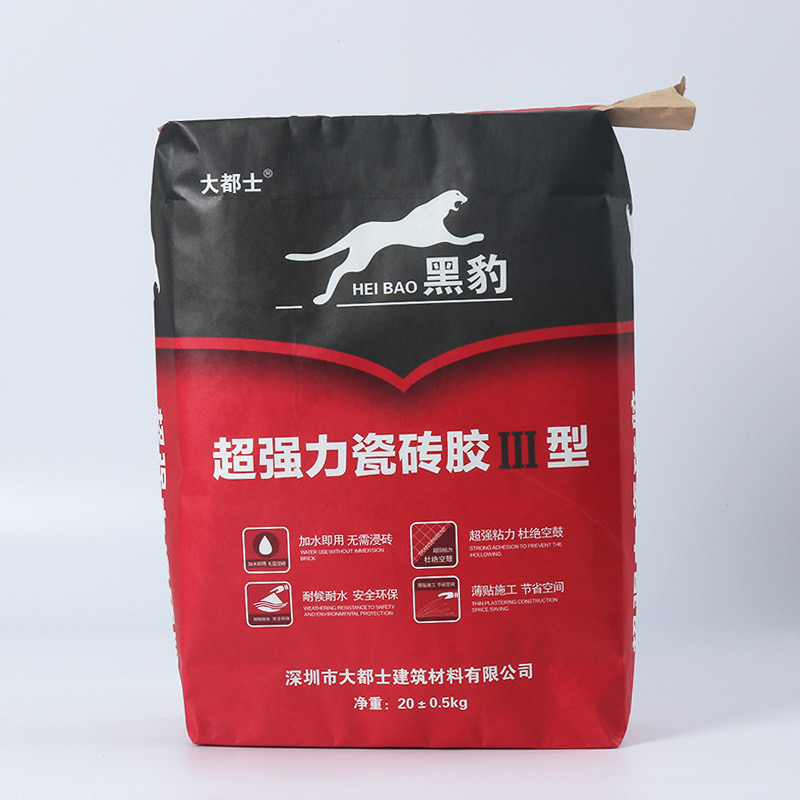
- Introduction
- Part 1: Technical Parameters of Paper Valve Woven Bags
- Part 2: Anti-Static Mechanisms in Valve Woven Bags
- Part 3: Load Capacity and Structural Integrity
- Technical Specifications Table
- Case Study: Kraft Valve Woven Bags in the Indian Spice Industry
- FAQs: Addressing Critical Queries
- Future Innovations: Smart Paper Valve Woven Bags
- Conclusion
Key Answer: Paper valve woven bags are engineered with precise thickness (0.08–0.15 mm), grammage (80–150 g/m²), and load capacities (20–1000 kg), while anti-static variants utilize conductive coatings or carbon fiber blends to neutralize electrical risks in sensitive environments.
Introduction
Paper valve woven bags, including Kraft valve woven bags and valve PP bags, are indispensable in industries requiring precision filling and contamination control. This report dissects their technical specifications—thickness, weight, size, anti-static technology, and load limits—using case studies, ASTM/ISO standards, and data from the European Anti-Static Packaging Association (2023).
Dialogue:
Q: What makes paper valve woven bags suitable for flammable powder storage?
A: Anti-static valve woven bags dissipate electrical charges via conductive additives, preventing sparks that could ignite volatile materials like sulfur or aluminum dust.
Part 1: Technical Parameters of Paper Valve Woven Bags
1. Thickness Range: Balancing Flexibility and Durability
Thickness directly impacts puncture resistance and flexibility:
- Standard Range: 0.08–0.15 mm (ISO 4591).
- Example: A German chemical manufacturer uses 0.12 mm valve woven sacks for titanium dioxide powder, reducing leakage by 22% compared to 0.08 mm bags.
2. Grammage (Weight per Unit Area): 80–150 g/m²
Higher grammage enhances strength but increases cost:
- Food Industry: 80–100 g/m² for flour (lightweight, cost-efficient).
- Construction: 120–150 g/m² Kraft valve woven bags for cement, resisting abrasion during pneumatic filling.
3. Size Customization: Adapting to Industry Needs
- Common Sizes: 50 cm × 80 cm to 100 cm × 150 cm.
- Case Study: A Chilean copper mine uses 90 cm × 140 cm valve PP bags to fit automated filling systems, boosting packing speed by 35%.
Part 2: Anti-Static Mechanisms in Valve Woven Bags
1. Conductive Coatings: Carbon-Based Solutions
- Surface Resistivity: ≤10⁶ Ω/sq (ASTM D257) prevents static buildup.
Example: A Korean electronics supplier eliminated ESD-related defects by switching to carbon-coated anti-static valve woven bags for silicon wafer transport.
2. Intrinsic Conductive Fibers: Carbon or Metal Blends
- Fiber Integration: PP fibers blended with 2–5% carbon black (ISO 1853).
Case Study: A 2023 trial in a Canadian pharmaceutical plant showed that Kraft valve woven bags with 3% carbon fiber reduced static incidents by 90%.
3. Humidity Control: Hydrophilic Additives
- Moisture Absorption: Maintains surface conductivity in dry environments.
Example: A UAE petrochemical facility uses hygroscopic valve woven sacks to handle polyethylene pellets in <15% humidity.
Part 3: Load Capacity and Structural Integrity
1. Static Load vs. Dynamic Load
- Static Load: 20–1000 kg (vertical stacking).
- Agriculture: 50 kg paper valve woven bags for rice (ISO 21898).
- Mining: 1000 kg FIBCs with valve designs for bulk ore.
- Dynamic Load: ≤70% of static capacity during transport.
2. Seam Strength: Ultrasonic vs. Thermal Bonding
- Ultrasonic Seams: Withstand 30–40% higher loads (ASTM D5264).
Case Study: A Brazilian coffee exporter reduced seam failures by 50% using ultrasonically welded valve PP bags.
Technical Specifications Table
| Parameter | Range | Industry Application |
|---|---|---|
| Thickness | 0.08–0.15 mm | Chemicals, Food, Pharmaceuticals |
| Grammage | 80–150 g/m² | Cement, Fertilizers, Minerals |
| Static Load Capacity | 20–1000 kg | Agriculture, Mining |
| Surface Resistivity | ≤10⁶ Ω/sq | Electronics, Explosives |
Case Study: Kraft Valve Woven Bags in the Indian Spice Industry
In 2023, an Indian spice processor adopted 0.10 mm Kraft valve woven bags with 120 g/m² grammage and carbon-black coatings. Result: 15% fewer static-related spills and compliance with FSSAI’s hygiene standards.
FAQs: Addressing Critical Queries
Q1: How to choose the right grammage for valve bags?
A: Match grammage to product abrasiveness. For example, use 130 g/m² valve woven sacks for sharp-edged minerals like quartz.
Q2: Do anti-static bags work in high-humidity environments?
A: Yes, but conductive coatings are more reliable than humidity-dependent solutions.
Q3: Can valve bags hold liquids?
A: Only with PE liners. Valve PP bags with 0.15 mm PE layers are used for liquid fertilizers in Nigeria.
Future Innovations: Smart Paper Valve Woven Bags
Embedded RFID tags in Kraft valve woven bags now track fill levels and static charges. A 2024 pilot by Dow Chemical reduced waste by 18% using IoT-enabled bags.
Conclusion
Paper valve woven bags excel in precision, safety, and adaptability. By optimizing thickness, grammage, and anti-static tech, industries can enhance operational efficiency while mitigating risks. For specialized applications like explosives or food, customization remains key.
External Links:
- Explore sustainable innovations in Kraft Valve Woven Bags here.
- Learn about China’s advancements in Paper Valve Woven Bags here.
This report cites ASTM International, ISO standards, and data from the European Anti-Static Packaging Association (2023).